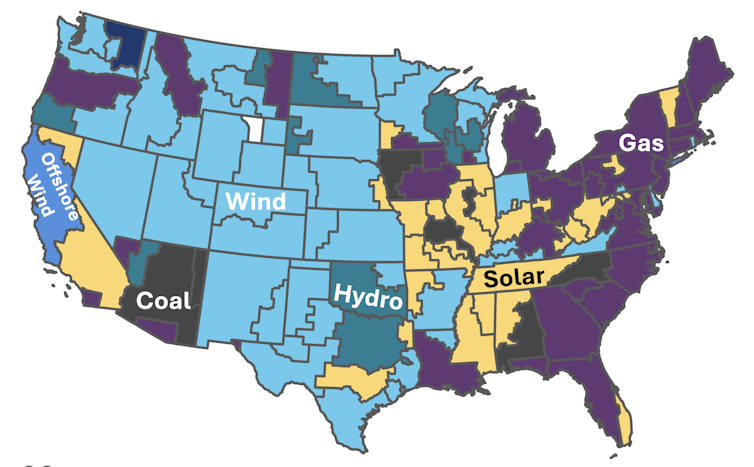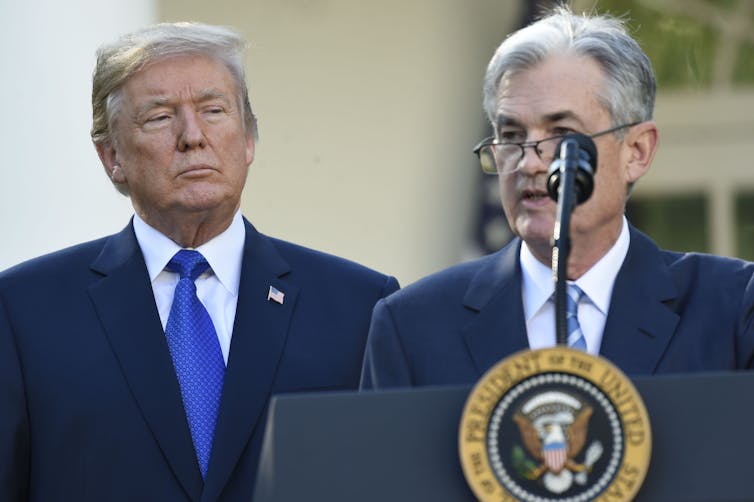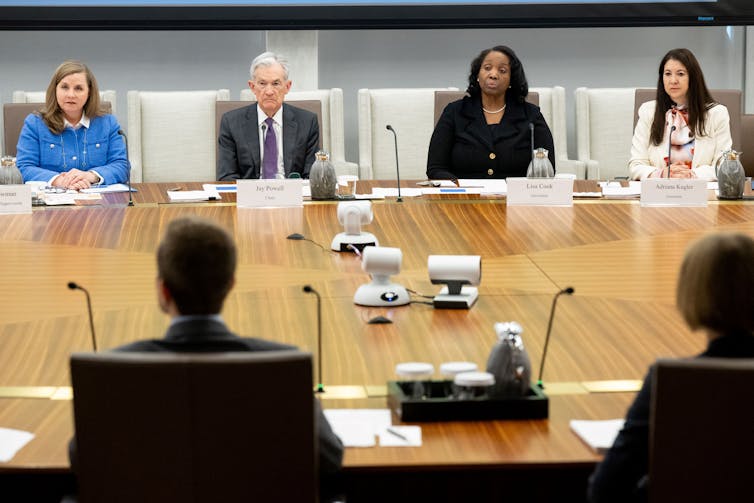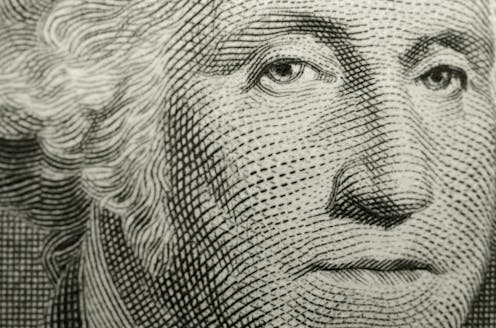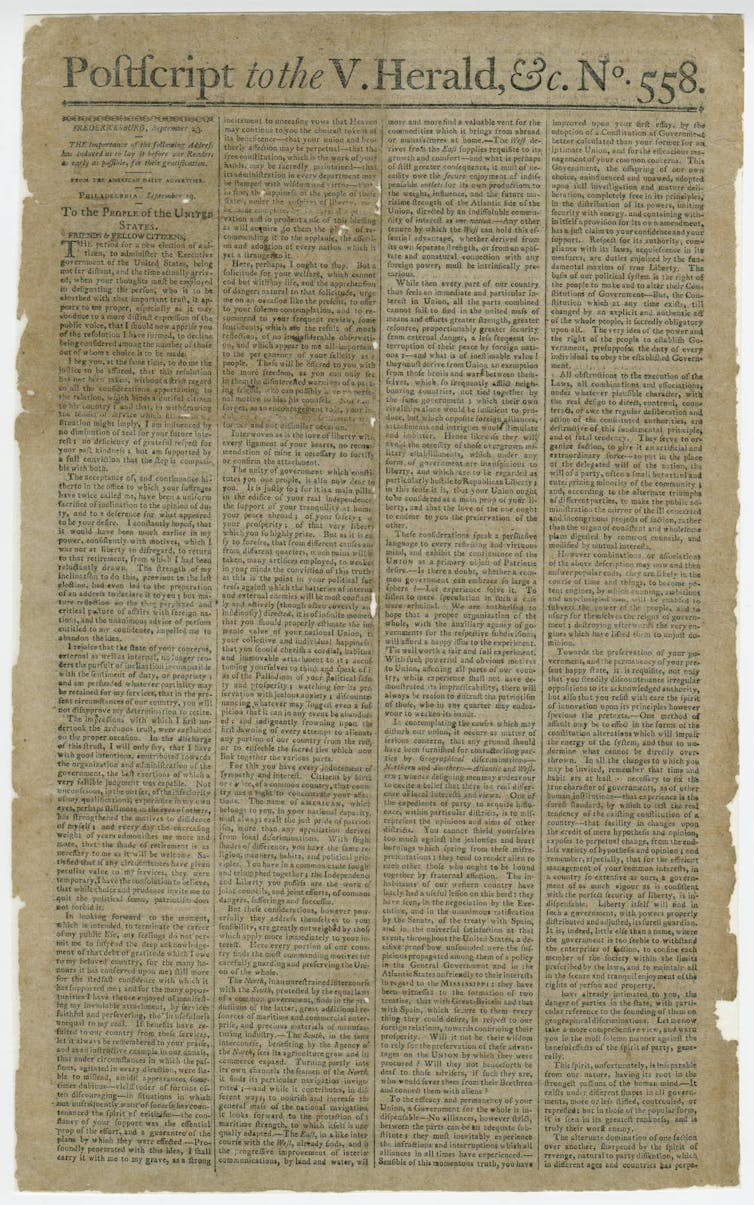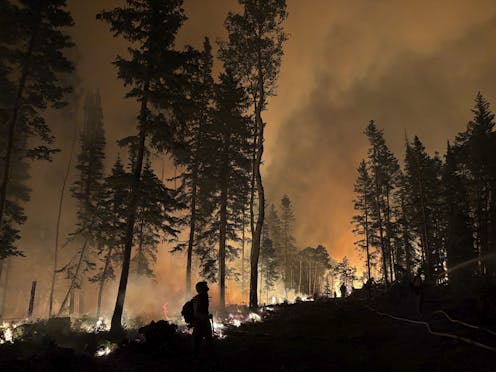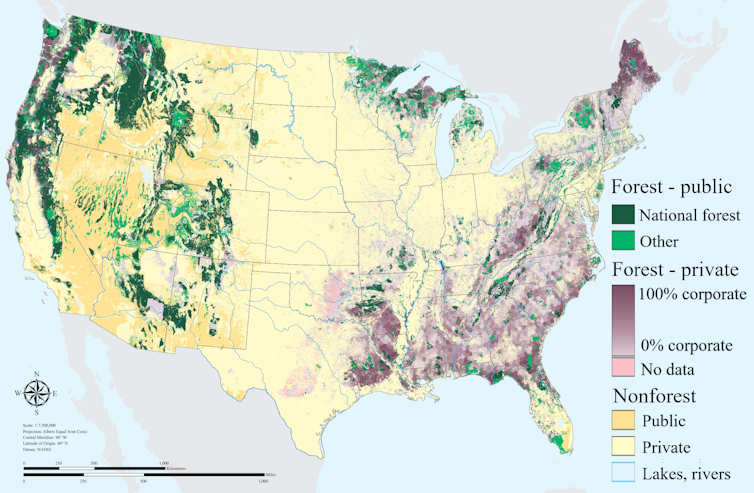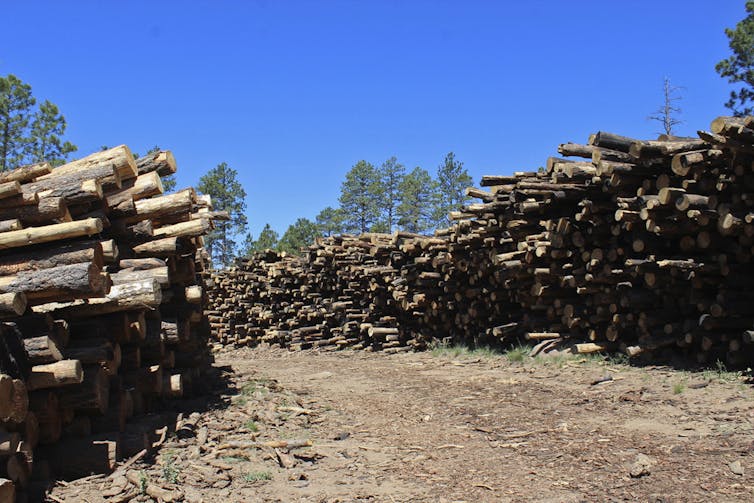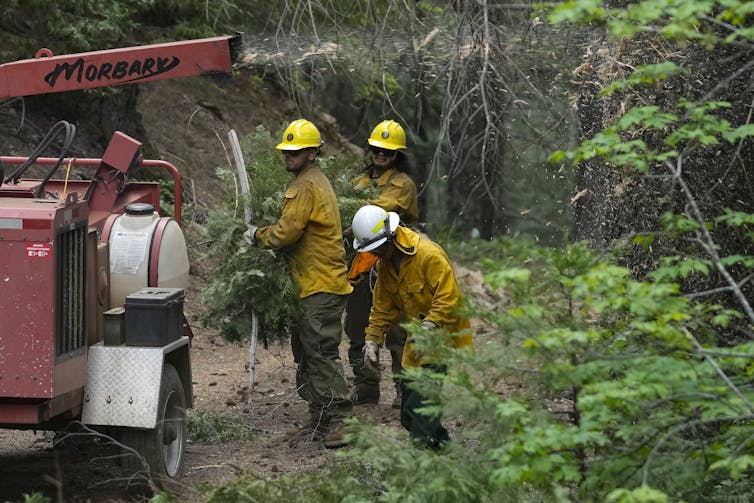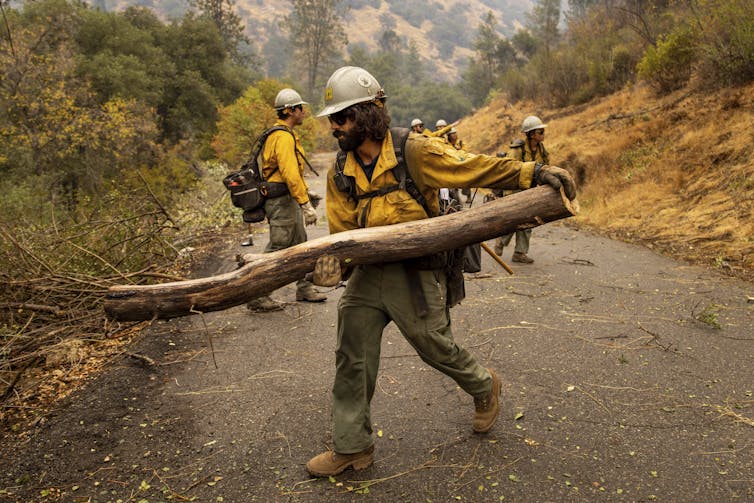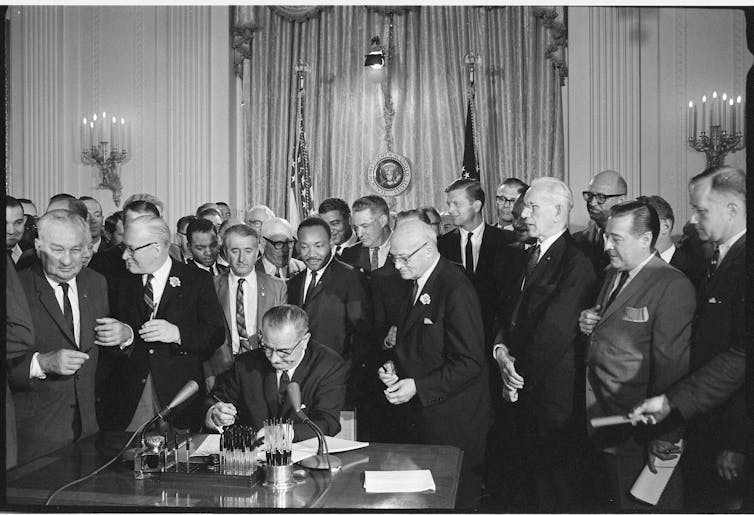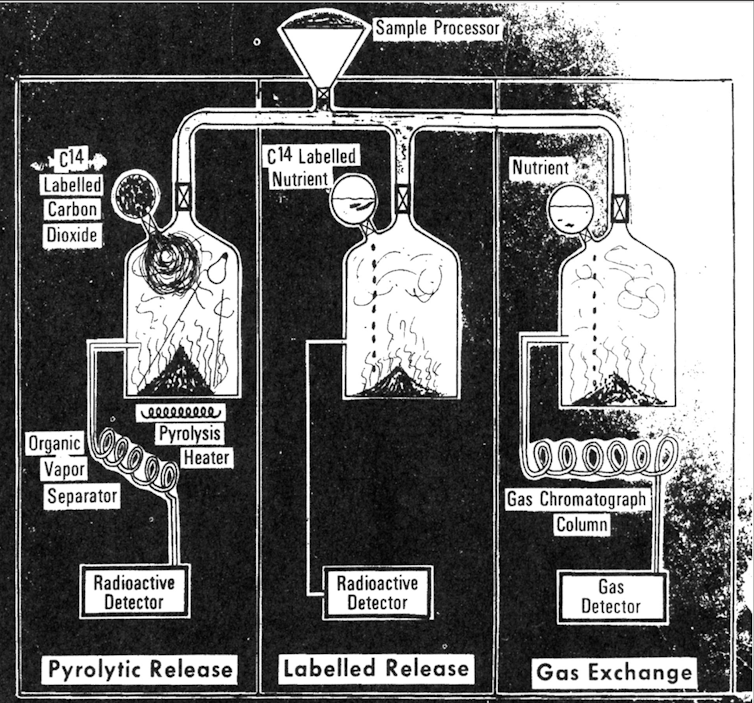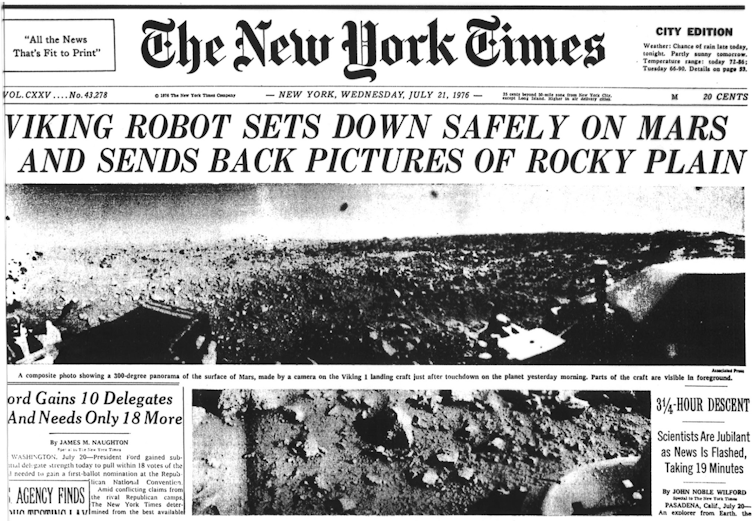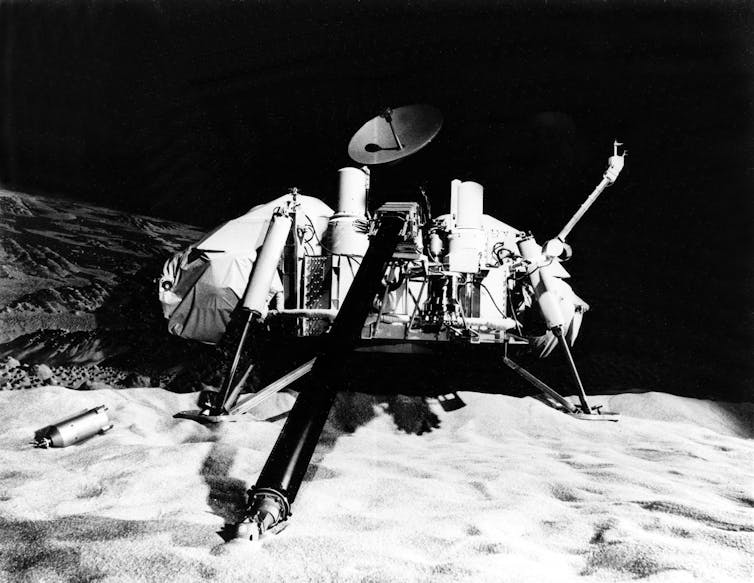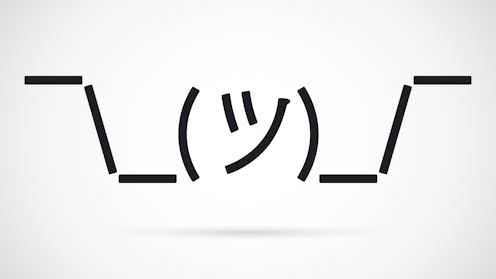Source: The Conversation – USA (2) – By Tom Langen, Professor of Biology, Clarkson University

When I started bird-watching as a teenager, a few years after the first Earth Day in 1970, several species that once thrived in my region were nowhere to be found.
Some, like the passenger pigeon, were extinct. Others had retreated to more remote, wild areas of North America. In many cases, humans had destroyed their habitat by cutting down forests, draining wetlands and converting grasslands to agriculture. Pesticides such as DDT, air and water pollution, and the shooting of birds added to the drop in numbers.
Birds are still declining across the continent. A recent study of 529 species found their numbers fell nearly 30% from 1970 to 2017. In 2025, nearly one-third of all North American bird species are declining; 112 bird species that have lost over half their population in the past 50 years.
Yet, half a century after I started birding, I am starting to see a few long-missing species reappear as I ride my bike from my home through the village and surrounding farmland in rural New York.
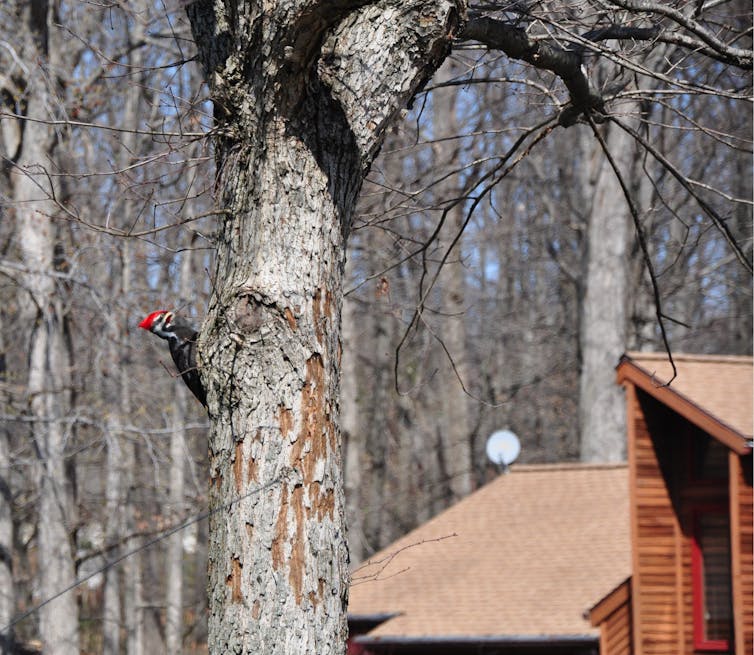
Christopher Langen
What has brought these species back while others are disappearing?
In some cases, like the bald eagle, state wildlife officials have reintroduced the birds. But others have returned on their own as habitat protection and restoration, the elimination of certain pesticides, and a shift away from shooting raptors and other large birds made the region less threatening for them.
As a wildlife biologist, I believe their return is a testament to conservation and the positive effect of reversing harms to the natural environment. Here are three examples.
Merlin: Pesticides’ collateral damage
The merlin is a falcon, a little smaller than a pigeon, that eats other birds.
Until the 1970s, merlins primarily bred in the vast coniferous forests of the far north. But in the early 1970s, they began nesting in Saskatoon, in Saskatchewan, Canada. Twenty years later, the city had 30 nests. Soon, merlins were breeding in towns across Canada’s prairie provinces, then spreading east into the cities and towns of eastern Canada and the northeastern U.S.

David St. Louis/Wikimedia Commons, CC BY
In Ontario, merlin populations have increased 3.5% per year over the past half-century, an explosive rate of increase.
Where I live in the Saint Lawrence Valley of New York, nearly every village has a pair nesting in an old crow nest at the top of a tall Norway spruce tree today. The loud ki-ki-kee of a territorial pair becomes a familiar sound when they’re in the area.
Why did merlin populations grow and spread so rapidly?

Tom Langen
Exposure to the pesticide DDT in the 1960s weakened the shells of eggs laid by merlins and other raptors, and fewer of their chicks survived. Their numbers plummeted as a result. When the U.S. and Canada began restricting DDT in the early 1970s – and other pesticides – it was possible for merlins to successfully breed once again in areas with extensive agriculture.
The indiscriminate shooting of birds of prey like the merlin has also declined. In the late 1800s, with farmers upset about losing poultry to raptors, Pennsylvania offered 50-cent bounties for the heads of merlins and other hawks and owls, and paid $90,000 over two years. People gathered at migratory passages, such as Hawk Mountain, to shoot birds of prey.
Ending bounty programs and enforcing laws prohibiting shooting helped stop this. More importantly, people became aware of the ecological value and beauty of raptors and turned against killing them. Today, Hawk Mountain is a site for bird-watching rather than bird-shooting.
Merlins may have also gotten some help from a large increase in urban-breeding crows. Merlins do not build their own nests but instead move into old crow nests. And it appears that merlins have adapted to the presence of humans, as well.
Pileated woodpecker: The need for big trees
Another bird that has dramatically increased in population and range is the pileated woodpecker. These black-and-white woodpeckers, recognizable for their bright red crest, are large – about the size of a crow.
The two other large woodpecker species in North America – the ivory-billed and imperial woodpeckers – are likely extinct today.
In the early 20th century the pileated woodpecker appeared to be on the same trajectory, as forest clearing took away their habitat. These woodpeckers rely on large dead or dying trees where they can excavate nesting cavities and feed on carpenter ants and wood-boring beetle larvae.

Gary Leavens/Wikimedia Commons, CC BY-SA
The regrowth of forest in eastern North America boosted their population – as did protection from shooting.
They now forage in large trees in suburban yards, visit bird feeders, nest in parks with substantial tree cover, and are not shy around people.
Their return is good for other species, too. The pileated woodpecker is a keystone species: Several birds and mammals benefit from the large tree cavities that the woodpeckers excavate.
Sandhill crane: A Clean Water Act success story
It’s not every day that you see a 4-foot-tall (1.2-meter) bird in rural New York, but it’s happening more often. Sandhill cranes were once almost extinct in the eastern U.S. Today, they’re making a comeback.
These large waterbirds disappeared across much of their breeding range in the early 20th century as wetlands were drained for agriculture. They were also shot to prevent crop damage and heavily hunted for meat and were referred to as “ribeye of the sky.”
By the 1930s, there were only about three dozen pairs in the eastern half of the U.S., mainly in remote marshes of northern Wisconsin. Laws such as the Clean Water Act, and programs that protect and restore wetlands and grasslands, such as the USDA Agricultural Conservation Easement Program, have played an important part in this species’ recovery.

Jeffrey Greenberg/Universal Images Group via Getty Images
Hunting regulations and migratory bird treaties have also been key. Probably because of reduced shooting, cranes now tolerate the presence of people. They’re spotted foraging on golf courses and even breeding in suburban wetlands near Chicago.
Today, over 90,000 sandhill cranes exist in the U.S., and they can be found breeding across the Great Lakes states, New England and eastern Canada. They aren’t beloved everywhere, however – in some areas, the cranes cause crop damage in cornfields.
Lessons for the recovery of other species
Other bird species that are now breeding in my area, but weren’t in 1970, include the Canada goose, turkey, trumpeter swan, great egret, bald eagle, osprey, peregrine falcon and raven.
All have benefited from habitat protection and restoration, less shooting of birds and, in the case of the raptors, bans of certain pesticides such as DDT.
While other bird species are declining, these recoveries show that when habitat is restored and protected, when people remove harmful substances from the environment and address harms caused by human infrastructure such as lights at night and reflective windows, some species that are currently rare and found only in remote places may return to the places we live.
![]()
Tom Langen does not work for, consult, own shares in or receive funding from any company or organization that would benefit from this article, and has disclosed no relevant affiliations beyond their academic appointment.
– ref. The surprising recovery of once-rare birds – https://theconversation.com/the-surprising-recovery-of-once-rare-birds-263595

